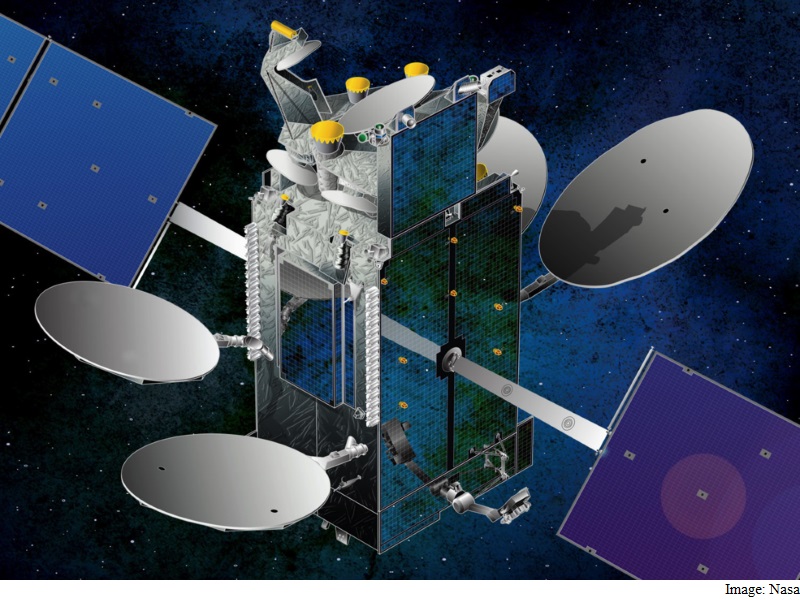- Home
- Science
- Science News
- Nasa to Test First Integrated Photonics Modem
Nasa to Test First Integrated-Photonics Modem

The space agency's first-ever "integrated-photonics" modem will be tested aboard the International Space Station beginning in 2020 as part of Nasa's multi-year Laser Communications Relay Demonstration (LCRD), the US space agency said in a statement.
The cell phone-sized device incorporates optics-based functions such as lasers, switches and wires onto a microchip much like an integrated circuit found in all electronics hardware.
Once aboard the ISS, the so-called Integrated LCRD LEO (Low-Earth Orbit) User Modem and Amplifier (ILLUMA) will serve as a low-Earth orbit terminal for Nasa's LCRD, demonstrating yet another capability for high-speed, laser-based communications.
ILLUMA incorporates an emerging technology integrated photonics that is expected to transform any technology that employs light.
This includes everything from internet communications over fibre optic cable to spectrometers, chemical detectors and surveillance systems, to name just a few.
"Integrated photonics are like an integrated circuit, except they use light rather than electrons to perform a wide variety of optical functions," said Don Cornwell, director of Nasa's advanced communication and navigation division.
Recent developments in nanostructures, meta-materials, and silicon technologies have expanded the range of applications for these highly integrated optical chips.
Furthermore, they could be lithographically printed in mass just like electronic circuitry today further driving down the costs of photonic devices.
"This technology will enable all types of Nasa missions, not just optical communications on LCRD," Cornwell added.
LCRD promises to transform the way Nasa sends and receives data, video and other information.
It will use lasers to encode and transmit data at rates 10 to 100 times faster than today's communications equipment, requiring significantly less mass and power.
Such a leap in technology can deliver video and high-resolution measurements from spacecraft over planets across the solar system -- permitting researchers to make detailed studies of conditions on other worlds.
"Google, Facebook, they're all starting to look at this technology. As integrated photonics progresses to be more cost effective than fibre optics, it will be used. Everything is headed this way," the authors noted.
For the latest tech news and reviews, follow Gadgets 360 on X, Facebook, WhatsApp, Threads and Google News. For the latest videos on gadgets and tech, subscribe to our YouTube channel. If you want to know everything about top influencers, follow our in-house Who'sThat360 on Instagram and YouTube.
Related Stories
- Galaxy S24 Series
- MWC 2024
- Apple Vision Pro
- Oneplus 12
- iPhone 14
- Apple iPhone 15
- OnePlus Nord CE 3 Lite 5G
- iPhone 13
- Xiaomi 14 Pro
- Oppo Find N3
- Tecno Spark Go (2023)
- Realme V30
- Best Phones Under 25000
- Samsung Galaxy S24 Series
- Cryptocurrency
- iQoo 12
- Samsung Galaxy S24 Ultra
- Giottus
- Samsung Galaxy Z Flip 5
- Apple 'Scary Fast'
- Housefull 5
- GoPro Hero 12 Black Review
- Invincible Season 2
- JioGlass
- HD Ready TV
- Laptop Under 50000
- Smartwatch Under 10000
- Latest Mobile Phones
- Compare Phones
- Huawei Pura 70 Pro+
- Huawei Pura 70 Ultra
- Tecno Camon 30 Premier 5G
- Motorola Edge 50 Fusion
- Oppo A1i
- Oppo A1s
- Motorola Edge 50 Ultra
- Leica Leitz Phone 3
- Asus ZenBook Duo 2024 (UX8406)
- Dell Inspiron 14 Plus
- Realme Pad 2 Wi-Fi
- Redmi Pad Pro
- Cult Shock X
- Fire-Boltt Oracle
- Samsung Samsung Neo QLED 8K Smart TV QN800D
- Samsung Neo QLED 4K Smart TV (QN90D)
- Sony PlayStation 5 Slim Digital Edition
- Sony PlayStation 5 Slim
- IFB 2 Ton 3 Star Inverter Split AC (CI2432C323G1)
- Daikin 1 Ton 3 Star Inverter Split AC (FTKL35UV16W+RKL35UV16W)

















